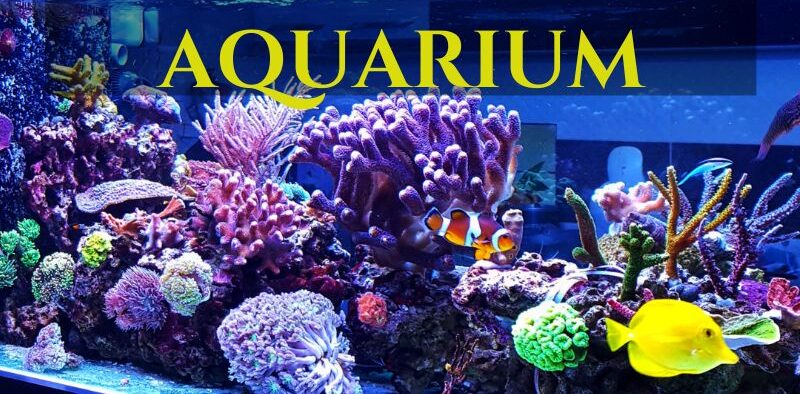5 Steps to Setting up your First Aquarium
Share

So, you’ve been captivated by the shimmering beauty of a well-maintained aquarium? The good news is, creating your own underwater world isn’t as daunting as it might seem. With a little planning and the right knowledge, you can be on your way to a thriving aquatic ecosystem. This guide will walk you through the essential steps of setting up your first aquarium.
Aquarium size is crucial. For beginners, a 10-gallon tank is a manageable starting point. It’s large enough to offer stability for water quality and accommodate a small community of fish. Remember, bigger isn’t always better – larger tanks require more maintenance. Smaller tanks are often outgrown by fish within a few weeks. Decide upon the tank, there are many available at 10 or 20 gallons in size, that house 5-10 tropical fish. They are perfect for those without much space, or for a beginner. However if you plan on a large fish stock or you want a lalrger tank, there are plenty available.
Gearing Up: Essential Equipment
Before we start into choosing the best location for your aquarium and learning how to cycle the water, we need some equipment. Most fish tanks now come complete with everything you need for setting up your first aquarium. Starter kits usually come with a filter, lighting and a heater. They also include many other accessories that can save you money and time. But, just in case they don’t, this is what you will need to get started:
- Filter: The lifeblood of your tank, the filter removes waste and keeps the water clean. Choose one rated for at least 3-5 times your tank’s volume per hour.
- Heater (for tropical fish): Maintain a consistent temperature ideal for your chosen fish species.
- Lighting: Fish need light for healthy growth, and plants require it for photosynthesis. Opt for an LED light with a timer set for 8-12 hours a day.
- Substrate (gravel): This provides a base for your tank’s decor and beneficial bacteria growth. Rinse your gravel thoroughly before adding it.
1. Choose a sturdy stand for your aquarium.
Make sure that the unit it sits on can take the weight of the full tank. Remember to account for the weight of the water, which is substantial. Fresh water weighs in at 8.3 pounds per gallon. So your 20 gallon aquarium weighs more than 166 pounds plus the weight of the glass, frame, gravel. Salt water weighs more than fesh water at 8.6 pounds per gallon.
Avoid placing the aquarium in direct sunlight or over a radiator, to avoid too much light and warmth. Most tanks come complete with lighting. Excessive sunlight will cause algae to grow and make the water temperature unstable.
A tropical aquarium just needs light for viewing and for fish health; which should be on for 7-10 hours a day. Tropical fish benefit from specialized lighting that enhances their beautiful colors.
2. Create a thriving habitat!
Choose the look of your aquarium before filling with water. Add your aquarium gravel, then start building up. Be sure your fish have plenty of hiding places. Prior to purchasing live plants, be certain you do your homework. Certain types of fish need certain types of plants that are native to their original environment.
Decor
It’s best to stick with artificial plants for your first aquarium. Then you will know they are free from bugs (like snails), which can destroy your tank.
Rocks, driftwood, and plants not only enhance the beauty of your tank but also provide hiding spots for fish and promote good water quality. Opt for live plants if you want a more natural look, but be sure they are compatible with your fish and lighting.
Water Treatment
If you use tap water to fill, then you need to treat it with a de-chlorinator. Dechlorinators help remove chlorine, chloramine and other heavy metals. This is important, as these elements are all very toxic to fish.
Then let the tank sit for a few days to allow the water, plants and gravel to settle.
3. The Nitrogen Cycle: Cycling Your Tank
Before introducing fish, you need to establish the nitrogen cycle. This natural process converts harmful fish waste into ammonia, then nitrites, and finally into less harmful nitrates. Beneficial bacteria grow in your filter and gravel, breaking down these waste products.
There are two ways to cycle your tank:
- Fishless cycle: Add a small amount of ammonia source (like fish food) to the tank and monitor the levels as the beneficial bacteria grow and convert the ammonia.
- Fish-in cycle: Add a small number of fish and monitor ammonia and nitrite levels closely, performing frequent water changes until the cycle establishes. Note: This method can be stressful for fish.
A build up or spike of fish waste (ammonia) is poisonous and can kill fish in a tank’s early days. This is called New Tank Syndrome and can be avoided with some preparation and perseverance. A filter is vital to keep the tank clean and cut down on maintenance. One may come with your tank or you can buy it separately. Choose one that can handle the amount of water in your tank, maybe even a little more – this will provide better filtration.
Fish will really benefit from adding Stress Coat, which helps calm the fish and protect their scales.

Be patient! This can take some time to settle.
4. Choose Your Fish
Once your tank has cycled (usually takes 4-6 weeks), it’s time to pick your fish! Research different freshwater fish species – consider their size, temperament, and compatibility with other fish. Start with a small community of hardy fish, like neon tetras or fancy goldfish.
Tropical fish are grouped into several categories. Usually, you’ll see that some are aggresssive. Others are friendly or community fish. Do your homework. Adding aggressive fish to a community of friendly fish is cruel. Your fish will wind up with injuries and the entire aquarium will be stressed. Some fish are only aggressive with long-finned or long-tailed fish. Others are aggressive only when they have multiple members of the same species in the tank.
If you’re not sure which fish will get along, ask a breeder or long-time hobbyist. They will be able to recommend some great starting fish!
5. Maintaining an Ecosystem
Regular maintenance is key to a healthy aquarium. Perform partial water changes (20-30% of the tank’s volume) weekly, replacing the removed water with treated tap water. Monitor water parameters like ammonia, nitrites, and nitrates with a test kit, and adjust water changes or add treatments as needed.
With a little dedication, your first aquarium can become a source of relaxation and enjoyment. Remember, start slow, be patient, and your underwater world will flourish!Now sit back and enjoy your aquarium, keep on top of maintenance and it will look beautifully healthy all the time.










